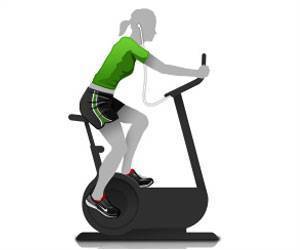Human milk is unarguably the best food for babies. It contains the right amount of nutrients in the right proportions for a growing baby.
From the minute my daughter was born, I asked the nurses to wake me up every time she wanted to nurse. I wanted to breastfeed and I thought it would be easy.
Three days later, I was singing a different tune and so was my daughter. I eyed the can of formula that was sent home with us … and gave in. I just couldn’t resist.She stopped crying, I stopped crying, but the guilt of bottle feeding her lingers to this day. Now the mother of two, who successfully nursed her second child, I know that breastfeeding is natural, but it takes patience and practice.
With the help of a small army of mother’s helpers, from pediatricians to nutritionists, everything you wanted to know about nursing begins right now.
Human milk is unarguably the best food for babies, according to the US Department of Health and Human Services. It contains the right amount of nutrients in the right proportions for a growing baby. Breast milk is different at the beginning and end of a feeding. It also comes in a variety of flavors that hinges on the mother’s diet.
“Breast milk is more than just calories, proteins, fat and carbohydrates. There are other nutrients that are not just ‘extras,’ implying that a baby can do without them. They are needed for optimal nutrition during infancy. Breast milk is the nutritional model for artificial baby milk, but no formula company can match it,” says Karen Gibson, a registered dietitian in the Department of Pediatrics at The University of Texas Medical School at Houston and director of the UT WIC (Women, Infants and Children) Program.
Breast milk ingredients:
Advertisement
- Lactoferrin helps the baby’s body absorb iron and protects the stomach from harmful bacteria.
- Lipases assist in the digestion of fats Advertisement
- Special growth factors and hormones contribute to baby’s growth and development
The study found that babies in the group given breast milk received higher scores on a test measuring their overall intelligence at 30 months of age, with the highest scores showing up among children who had received the most breast milk as infants.
Premature infants are usually fed through a feeding tube, since most will have trouble nursing from their mother.
“When companies imply that formula is ‘second’ to breast milk, they are leaving a lot up to the consumer to assume. Formula is really a distant second in providing the complete nutrient profile that breast milk does,” says Gibson.
Human milk is a baby’s first immunization. It provides antibodies which protect the baby from many common respiratory and intestinal diseases, and also contains living immune cells. Breast milk contains immune components such as growth factors, cytokines, and antimicrobial compounds.
“Although controversial, breast milk may also provide protection against some forms of allergies,” says Susan Pacheco, MD, pediatric immunologist and assistant professor in the Department of Pediatrics at UT Medical School.
“The same applies to atopic or allergic diseases, such as asthma,” says Pacheco. Researchers are still examining breast milk closely, to determine all possible benefits.
Destiny Wright had her heart set on breastfeeding when she had her first son. She didn’t even buy any bottles. “While I was pregnant, my doctor told me that I may have trouble nursing, but didn’t explain why. I wasn’t told that having flat nipples would affect my ability to nurse my son,” says Wright.
“When he was born in Colorado, the nurses didn’t help me. Every time I asked a question, they treated me like I should know the answers already. It broke my heart. I tried as long as I could to nurse him, but gave up when the pediatrician said he was losing weight at his one-month check-up,” says Wright.
When Wright found out she was pregnant with her second child, she began doing research and turned to The University of Texas WIC Program for help. Wright says they gave her free breast shields when she was about five months pregnant. The devices helped draw out her nipples, so she could better nurse her baby.
Donovan was born four months later at Memorial Hermann Northwest. Wright’s experience according to her: unbelievable! “They were so pro-nursing there. I started freaking out thinking he wasn’t getting enough milk, but they calmed me down and told me to relax,” Wright says.
Nurse Dana Havard was particularly helpful, teaching Wright good positioning and eventually calling in a lactation consultant to Wright’s room. “When I really began to feel him nursing well, Dana was as excited as I was. She was invaluable and I will never forget her help,” Wright remembers happily.
Donovan is now a thriving 3-month-old, breastfed exclusively. Wright credits the hospital and the UT WIC Program for providing invaluable instruction and support. “Women need a support system, and I could not have asked for better help. I would tell all mothers if it is their first, second or third attempt at breastfeeding, don’t give up. There is help, but if you decide you can’t do it, don’t feel bad either,” Wright says.
Why do women stop breastfeeding? (How much time do you have?) Breastfeeding means it is all you, all the time. A newborn baby can nurse every two to three hours, day and night. If you want a little help from Dad, you still have to pump the milk for him, which takes time, patience and an extra set of hands to care for the baby while you’re pumping. It also takes equipment. And, if you’re in the same home with a baby who is crying for milk, your body will most likely respond, causing a mess.
Bottle-fed babies also tend to be satisfied longer between feedings because the proteins in infant formula are harder to digest. They may only eat every three hours.
Nursing can also cause fatigue, anxiety and frustration while you are learning. And, like everything else, there are also some possible side effects:
Engorgement usually happens a few days after you have your baby. Once-soft breasts can become as hard as a table top, too turgid, in fact, to drain. Your milk usually comes in on about day three. Your baby may not be able to empty your breasts, so they can become quite painful. The problem can be eased by pumping a little milk.
Cracked nipples can also cause pain. It usually occurs from incorrect positioning of the baby’s mouth or tongue in combination with strong sucking. Certain ointments help soothe the area, and breast shields can protect the nipple, allowing you to nurse while you heal.
Mastitis is the term for breast infection. Moms with cracked and bleeding nipples are at increased risk because they have an open door for bacteria to enter the breast tissue. This produces a hot, red, painful area on the breast and the mother may run a fever. Mastitis can be treated with antibiotics. The mother can continue to nurse and is encouraged to do so. The antibiotics prescribed are not harmful to the baby, and emptying the infected breast helps keep the milk flowing. The milk in the infected breast is still healthy.
The learning curve is already hard enough with one baby, so how about two or more? It can be little tricky, but it can be done. It’s best that you contact a board- certified lactation consultant before you have your babies, so they can show you the various nursing positions when juggling more than one infant. There are also specially made nursing pillows for twins. The pillow helps you position both of your babies at your breasts.
Once a nursing pattern is established, do not worry about having enough milk for two babies. It’s called supply and demand. In most cases, your body will produce enough milk to go around.
If you are having trouble juggling your new bundles of joy, try expressing milk so Dad, or someone else, can feed one of them.
If your babies were premature, breast milk can go a long way in giving their immune systems a boost, in gaining weight and developing at a good pace.
What is good for baby is also good for mom. Breastfeeding is the next natural physiological step after pregnancy. Pregnancy morphs your body in countless ways; breastfeeding helps return it to its pre-pregnancy state.
Through the small uterine contractions that nursing creates, breastfeeding can help your uterus return to its normal size more quickly and slow down your post-partum bleeding.
Nursing mothers also tend to lose their “pregnancy weight." Milk production burns between 200 and 500 calories a day. You would have to ride a bicycle for at least an hour to achieve the same loss.
Mothers who breastfeed for at least six months throughout their lifetime have a decreased risk of breast, ovarian and uterine cancers, according to the US Centers for Disease Control and Prevention (CDC).
More women are continuing to try breastfeeding, but the percentage of mothers who breastfeed exclusively is far short of the national objectives. “The increase in mothers choosing to initiate breastfeeding is good news because it provides health benefits for women and decreases the risk of some early childhood diseases among infants,” says William H. Dietz, MD, PhD, director of the CDC’s Division of Nutrition, Physical Activity, and Obesity.
Nearly 74 percent of women who gave birth in 2004 initiated breastfeeding, up from 70.9 percent for infants born in 2000, and nearly achieving the national objective of 75 percent. However, the rates for exclusive breastfeeding were not nearly as good. Among infants born in 2004, the rate of exclusive breastfeeding through age 3 months was 30.5 percent. These statistics show that a high percentage of women who leave the hospital breastfeeding, will stop in the first few weeks.
In recent years, states are beginning to show support for nursing mothers by passing legislation to protect them. In 1995, legislation was passed in Texas to stand behind mothers who breastfeed in public.
The language of House Bill 359 includes: “A mother is entitled to breastfeed her baby in any location where she is authorized to be; allows worksites to use the designation of ‘mother-friendly’ if they develop worksite policies supporting breastfeeding; state agencies that administer maternal/child health program provide information that encourages breastfeeding; create worksite breastfeeding support policies for all state employees.”
At present, states and the federal government have not made it easy for nursing mothers to return to work and continue breastfeeding. Most workplaces do not have areas set aside for women to pump their milk.
Before you go on maternity leave, or before you return to work after your baby is born, get organized. Talk with your employer about having a private place, with a lock, where you can pump your breasts. Remember, that unless you have a battery-operated pump, you will need a room that has an electrical outlet.
You will also need to talk with your employer about allowing you at least two times a day to pump. You will need about 20 minutes to empty your breasts if you have a double pump, possibly more if you have a single pump. Here’s a checklist of possible supplies:
- Breast pump, plus electrical adaptor if needed. Extra batteries if you are using a battery-powered pump
- A small cooler, plus an ice pack, if a refrigerator is not available. (If you have a long drive home, it may be best to have a cooler, to ensure the milk remains at the same temperature.)
- Milk storage containers
- Breast pads to prevent milk from leaking through your bra onto your clothes
- Clothing that makes it easy for you to pump your breasts, including nursing bras
Source-Newswise
SRM/SK













